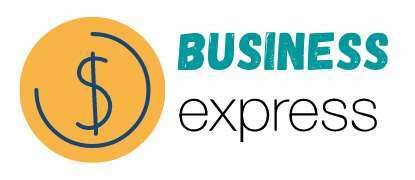 As seen in Business Express
As seen in Business Express
Andrew Heath, CEO, WeThrive, explains why wellbeing should be treated as part of your people strategy in the same way as recruitment, talent management or promotion.
According to a recent survey by consulting firm PWC, 93% of UK CEOs prioritised their employees’ health and safety above everything else during the pandemic. It found that nine in 10 UK bosses provided wellbeing support and initiatives, compared with 61% globally. This paints a very positive picture of caring senior executives checking in with their employees, but just how realistic is it? Just because a CEO claims to value employee wellbeing above everything else (just like they say “our employees are our greatest assets”), that doesn’t mean that workers’ experience reflects this on a day-to-day basis.
Organisations have a legal duty to not only protect employees from physical harm at work, but from undue stress “hazards” that could lead the employee to suffer burn-out or long-term mental health issues. But they also know that trumpeting their wellbeing credentials can make them an attractive employer; after a year in which everyone’s mental health has come under strain, knowing an organisation will offer support in times of mental stress is reassuring. That’s not to say support isn’t in place: many offer employee assistance programmes, have mental health first aid training, or even virtual GP services. Yet a poll by Mental Health First Aid England recently found that a quarter of employees said their workplace had not checked in on their mental health since the pandemic hit more than a year ago and only 32% felt wellbeing provision in their organisation had improved.
Wellbeing is a people strategy in the same way as recruitment, talent management or promotion. Developing those strategies would involve gathering data to support your decisions – so if you decided to change the graduate recruitment programme, you’d look at intake numbers, who was dropping out and feedback on your assessments. Wellbeing should be no different, so why do many organisations invest in tools such as EAPs without asking employees what it is they actually need? If your culture is already toxic and employees feel uncomfortable speaking up, a confidential advice line isn’t going to help. In fact, you’re more likely to receive negative feedback than insight into the psychological workings of your best people.
One of the issues here is that executives tend to have a layer of insulation around them that stops them seeing where problems might arise. While they may have given us a small window into their home lives over Zoom calls and town halls at the start of the pandemic, how much do they know about the experience of a junior sales executive having to share a kitchen table with a flatmate or the challenges face by one of their front line workers to get to work every day? Asking questions about employees’ experiences and circumstances can feel scary as it can be daunting to hear the answer, but the more you know, the more you can offer help that really works.
We recently worked with the Financial Services Compensation Scheme where, eight years ago, only 43% of employees felt the culture was positive. Using non-anonymous surveys we asked what staff wanted from the company culture and about their individual employee experiences of the organisation. During the pandemic, some staff reported heightened anxieties and FSCS was able to allocate weekly catch-up sessions with in-house mental health first aiders. Specific information around travel anxieties has fed into how the organisation is communicating its return to work plans, as well as changes to office spaces and layouts to ease the transition. Today, 87% of staff feel positive about the culture they work in because they feel listened to and that their concerns will be acted upon. Furthermore, 91% of employees also believe the FSCS is a caring and inclusive employer.
The risks of getting it wrong are great. Data from the Office for National Statistics found that homeworkers did nearly twice as much unpaid overtime per week in 2020 as they did before the pandemic. Occupational health experts predict a huge rise in musculoskeletal conditions due to often unsuitable office chairs and desks as people “made do” with the equipment they had at home. It’s not out of the question that we could see litigation cases emerge where employees felt their employer did not do enough to protect them from damage to their physical or mental health during this period. Yet at the same time, data from XpertHR has found that sickness absence reporting rates are at their lowest level in 15 years, suggesting employees may not be reporting illness because they are concerned about their jobs.
Empowering managers to create a culture where they can ask the right questions of employees can mitigate that risk. An anonymous, catch-all employee survey might not give you the insight you need, however. A survey of our customers found that surveys get a 10% increase in participation when they are not anonymous, when individuals know that their feedback will be acted on. Offering managers targeted suggestions for support based on that feedback helps them engage with an employee on an individual level, who in turn feels valued by their employer. The data insights that emerge can help build a wellbeing response that truly reflects your organisations’ needs – perhaps one department needs targeted triage in a particular area, while another has benefitted from something simple such as increased one-to-one meetings. This goes beyond compliance and supports them to perform at their best – and if they’re not feeling their best, they feel more comfortable to share.


